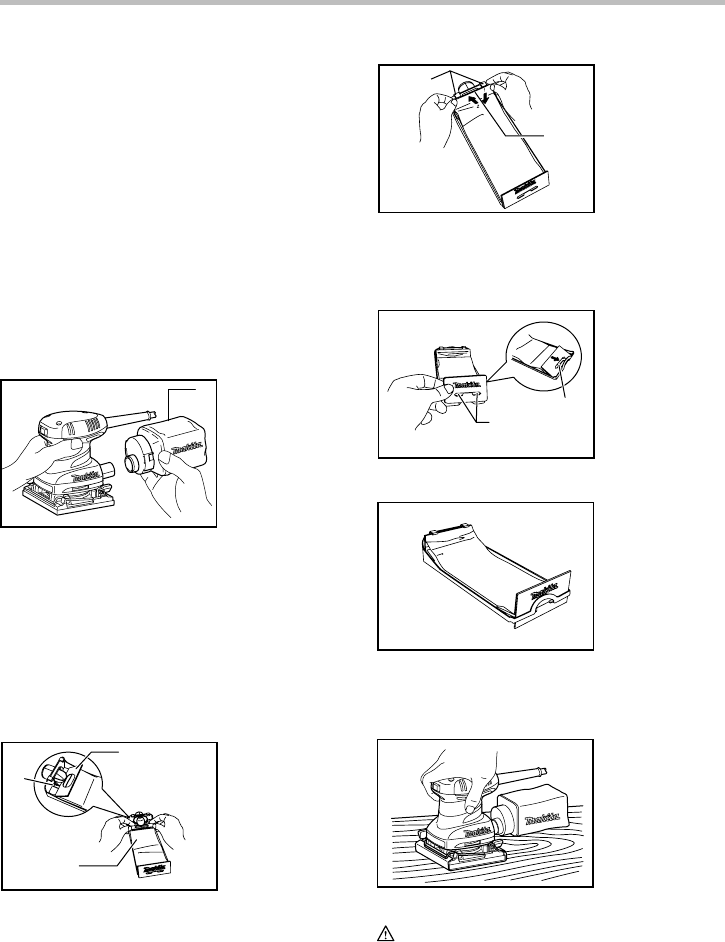
5
1. Set the tool upside down so that the pad is on top.
2. Position the sandpaper to fit the shape of the base.
Be sure to align the holes on the sandpaper with
the holes on the pad (the dust will be sucked into
these holes; it is therefore important to leave them
open).
3. Press the paper firmly over the pad.
To remove the sandpaper:
1. Set the tool upside down so that the sandpaper is
on top.
2. Grasping one corner of the sandpaper, peel it
from the pad.
NOTE:
• If the sandpaper is in good condition, save it for
further use.
Dust bag
1
008301
The use of the dust bag makes sanding operations clean
and dust collection easy. To attach the dust bag, fit the
bag's entry port onto the dust spout on the tool. Make
sure that the hole in the bag's entry port is just over the
pimple-like protrusion on the dust spout.
For the best results, empty the dust bag when it
becomes approximately half full, tapping it lightly to
remove as much dust as possible.
Installing paper dust bag (optional accessory)
1
2
3
003742
Place the paper dust bag on the paper dust bag holder
with its front side upward. Insert the front fixing
cardboard of the paper dust bag into the groove of the
paper dust bag holder.
Then press the upper part of the front fixing cardboard in
arrow direction to hook it onto the claws.
1
2
003743
Insert the notch of the paper dust bag into the guide of
the paper dust bag holder. Then install the paper dust
bag holder set on the tool.
1
2
003744
003745
OPERATION
Sanding operation
008294
CAUTION:
• Never run the tool without the abrasive paper. You
may seriously damage the pad.
• Never force the tool. Excessive pressure may
decrease the sanding efficiency, damage the
abrasive paper and/or shorten tool life.
1. Notch
2. Guide
1. Claws
2. Upper part
1. Groove
2. Front fixing
cardboard
3. Front side of
paper dust bag
1. Dust bag


















